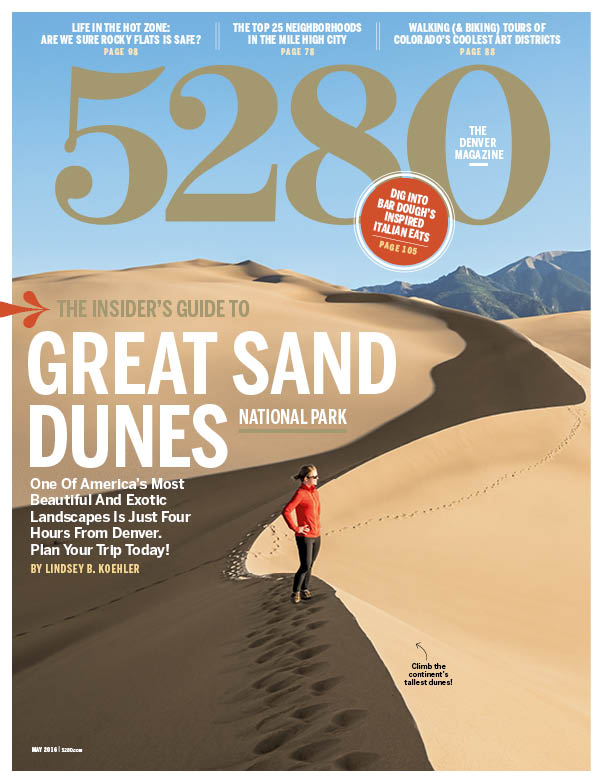The Local newsletter is your free, daily guide to life in Colorado. For locals, by locals.
People have a tendency to be both timid about and fascinated by things unfamiliar. Untried foods. New hiking trails. Foreign countries. All of these can provoke a nervous energy when we encounter them in real life. Even when we come across them in a fictitious setting—say, in last year’s wildly popular film The Martian—we are at once captivated and a little anxious.
For those of you who didn’t see the movie (or read the book), Matt Damon plays an astronaut and scientist who is stranded on Mars. The narrative focuses on his efforts to survive. I won’t give anything else away, but I think it’s fair to say part of the movie’s success—it grossed $228 million in the United States—was due to the awesome, exotic, and perilous landscape of Mars (those scenes were filmed in Jordan). Now, give the cover of this magazine another look. You see vast expanses of sand, dramatic shadows, and graceful curves that only Mother Nature could’ve produced. It’s a landscape that’s unequivocally other. And it’s not just the 750-foot sand dunes that qualify as unfamiliar; the surrounding San Luis Valley is an amalgam of the unusual. With a sparse population, high-desert terrain prone to wicked weather, and a tendency to attract wanderers, this giant basin is not the Colorado you know. It is, for all intents and purposes, Mars.
And yet there is this woman, in her hiking boots and leggings and fleece. She is familiar because she represents the quintessential Colorado adventurer. She is you—that is, if you decide to make the four-hour drive from Denver to Great Sand Dunes National Park and Preserve, one of the strangest, most diverse, and most beautiful places in the country. I dare you to read deputy editor Lindsey B. Koehler’s “Earth, Wind & Water” (page 64) and not want to experience something just a little different.
Elsewhere in this issue, we explore a landscape of another sort—a parcel of earth that, unlike a national park, was abused and is now being readied for public use after years of cleanup. I am referring to Rocky Flats Plant, the former nuclear weapons parts facility located just 16 miles from downtown Denver. Nine years ago, 5280 published an article detailing how the federal government was screwing former Rocky Flats workers out of compensation for health issues they developed as a result of working at the plant. Today, parts of the former site have been remade into a wildlife refuge, a seemingly inviting open space that will ultimately be open to hikers and is attracting housing developers, who are pushing ever closer to the refuge’s borders. But is the site clean enough for such things? Multiple government agencies say yes, but one man isn’t so sure. Jon Lipsky, who raided the plant as an FBI agent in 1989, is advocating for Coloradans to take a very close look at how safe the site and its surroundings are. In “Rogue Agent” (page 98), freelance writer Quentin Young looks into Lipsky’s reservations and investigates whether we should rethink taking a leisurely hike at Rocky Flats. After all, sometimes there’s good reason to be wary of the unknown.









